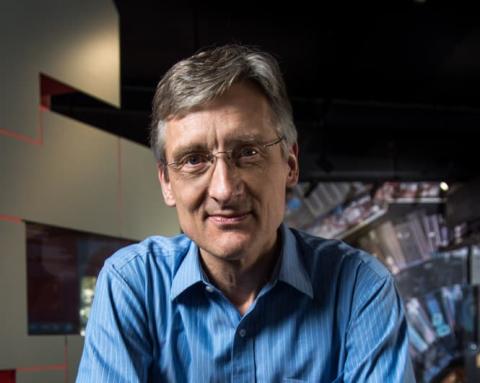My career has taken me from Hamburg to Stanford and Heidelberg and back to Hamburg, and although this is the first time I have been based at CERN, it is not my first involvement with the Laboratory. I was a member of the OPAL collaboration in the late 1980s, and chaired the LHCC from 2011 to 2014. In addition, over the past ten years I have enjoyed contacts with many colleagues at CERN, via joint European programmes and particularly in discussions on linear colliders.
In this, my first message to personnel, I’d like to set out my view of what makes CERN’s research great, and where I’d like to see things when I step down at the end of 2020. First and foremost, I have to refer to the many excellent experts at CERN and to the thousands of users of our facilities. Their ideas are the backbone of all CERN activities and I very much value their input. As to the scientific programme, it goes without saying, of course, that the LHC is this laboratory’s flagship, so it has been very good to see the machine coming out of its winter slumber over the last few weeks. We’re in for a very exciting year with the LHC. For one thing, the tantalising 750 GeV ‘bump’ seen by both ATLAS and CMS in their 2015 data will be resolved either as a real peak, or as the chimera of a statistical fluctuation. Whatever the case, both experiments are painstakingly writing up their 2015 analyses of this phenomenon, as the scientific method dictates, so whatever happens, things will be absolutely transparent.
Bump or no bump, there will be a rich harvest of physics to be brought in from the 2016 data as we extend sensitivity in energy and mass reach. Both ATLAS and CMS have teamed up with their smaller neighbours, bringing forward physics into the mainstream LHC programme, and with all four of the major experiments taking data with lead ions, it’s fair to say that heavy-ion physics has also become mainstream.
The LHC programme alone is rich and diverse, but there’s much more to CERN than the LHC. From the East Area to the North Area, from the AD to ISOLDE and n_TOF, CERN supports a vast spectrum of world-class research, and our facilities are constantly developing to accommodate the evolving needs of our research community. To this end, ELENA will soon be providing much more intense beams of antiprotons for the AD experiments, and – pending financial support being secured – we also have the opportunity in the near future of bringing the Test Storage Ring (TSR) from Heidelberg to HIE-ISOLDE to increase the intensity of its beams by several orders of magnitude. The CERN neutrino platform established in 2015 serves as a focal point for European physicists to participate in neutrino programmes in the US and Japan, and creates an environment to explore and qualify the technologies needed for the large-mass detectors these programmes require. These are all very exciting developments for CERN’s future scientific diversity. Nevertheless, with the unique array of facilities, we can always be open to new ideas, and that’s why we’ll be holding a meeting late this summer to study the potential for increasing the diversity or our research even further – an initiative that goes by the name of “Physics beyond colliders”.
My full title is Director for Research and Scientific Computing, so I’m very conscious that by focusing on the experimental programme, I’ve only covered part of my remit. Theory and computing will form the basis of future messages, but for now I’d like to end by saying that it’s my sincere pleasure to step into a lab with such breadth and depth of research. I am excited by the physics prospects of the coming years and while the LHC will continue to be the physics workhorse at the energy frontier, it is time to prepare a long-term vision for particle physics that can be cast into a strategy at the end of my five-year term in office.

